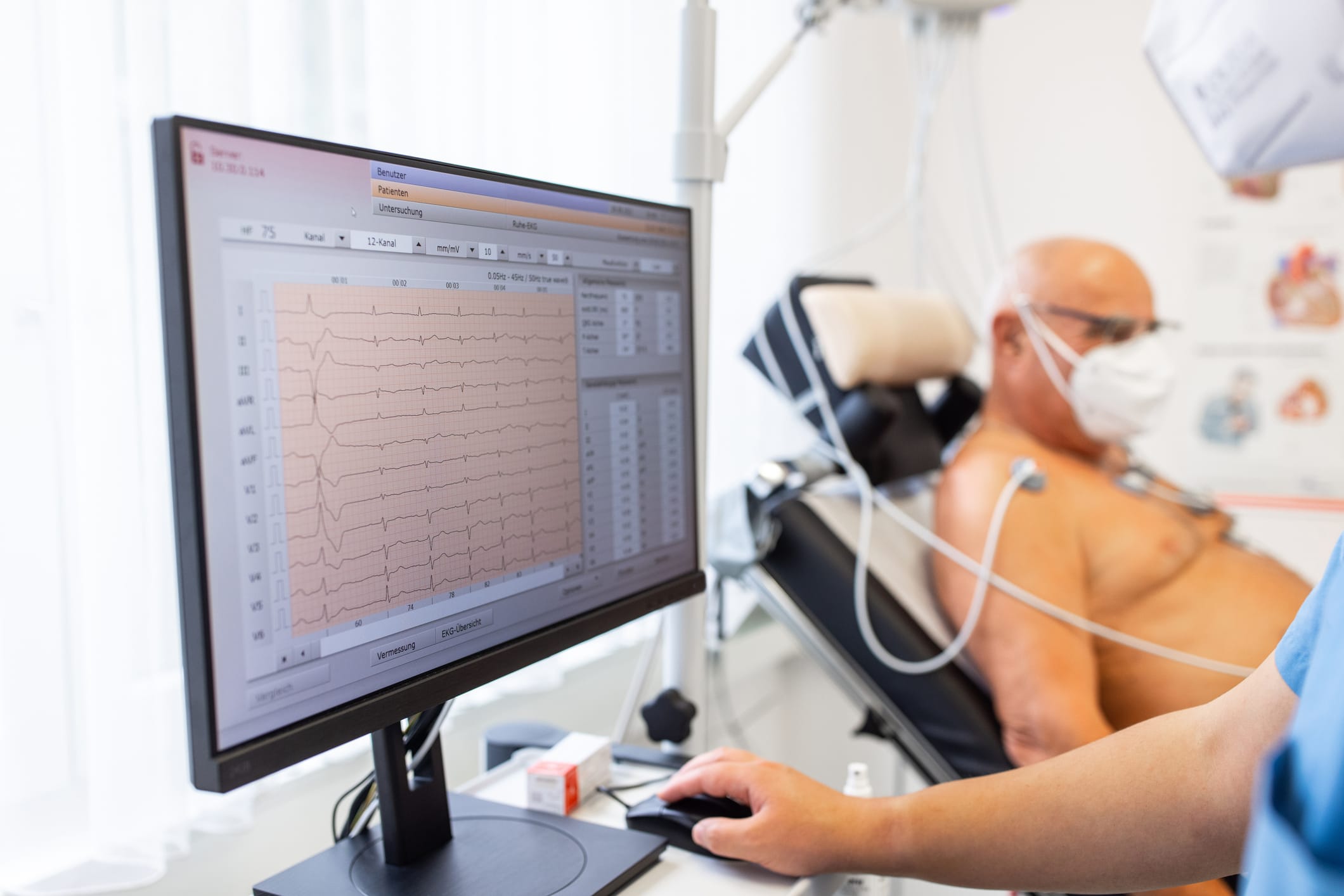We’ve all seen them on screen, in medical dramas and movies: they’re the monitor quietly beeping in the background, its rhythmic lines recording slopes and peaks. But what is an an electrocardiogram like in real life, and how is it used in transthyretin amyloid cardiomyopathy (ATTR-CM)?
What is an electrocardiogram?
An electrocardiogram (ECG, also abbreviated as “EKG”) is a non-invasive, painless test that measures the electrical activity of the heartbeat. Each beat of the heart sends an electrical wave through the muscle, causing the heart muscle to squeeze and pump the blood from the heart. By measuring these electrical waves, an ECG can show the heart’s rate and rhythm.
ECGs can help diagnose many different heart conditions. They are often performed when ATTR-CM is suspected, following symptoms such as shortness of breath, irregular heart beat, fatigue, coughing or wheezing and edema.
Read more about ATTR-CM testing and diagnosis
What does an electrocardiogram show in ATTR-CM?
A healthy heart has taller waves on an electrocardiogram, showing strong electrical activity. This is referred to as high voltage, and reflects a heart muscle that is strong.
In ATTR-CM, the waves are shorter, indicating low voltage. An ECG can also signal that the heart muscle has thickened, a result of amyloid deposits stiffening the heart. When cardiologists find low voltage and thick heart walls, they are key indicators of ATTR-CM.
However, a diagnosis of ATTR-CM includes other diagnostic tools, such as a cardiac MRI, nuclear medicine scan of the heart and possibly a biopsy. Genetic tests often follow to determine the specific ATTR-CM variant.
What to expect from an electrocardiogram appointment
Your cardiologist or primary healthcare provider may refer you for an ECG as part of the screening process for ATTR-CM. Your appointment will be at a clinic or hospital. An electrocardiogram doesn’t require any preparation (such as fasting), and is quick and painless. You can expect these steps:
- An ECG technician will explain the procedure, and ask you to change into a hospital gown and lie down on the exam table.
- The technician will wipe your skin with alcohol and then place several electrodes with sticky patches on your chest; they may also place one on each arm and one on each leg. These electrodes have leads that are connected to the ECG machine. The technician may need to shave small patches of chest hair so the electrodes can stick.
- You will need to lie still, without moving or talking. Breathe normally. The ECG machine will record your heart’s electrical activity for 10-30 seconds.
- Once the test is finished, the technician will remove the electrodes and any sticky residue.
- Depending on the clinic, you may get your results immediately, or they will be sent to your cardiologist.
Sign up here to get the latest news, perspectives, and information about ATTR-CM sent directly to your inbox. Registration is free and only takes a minute.

